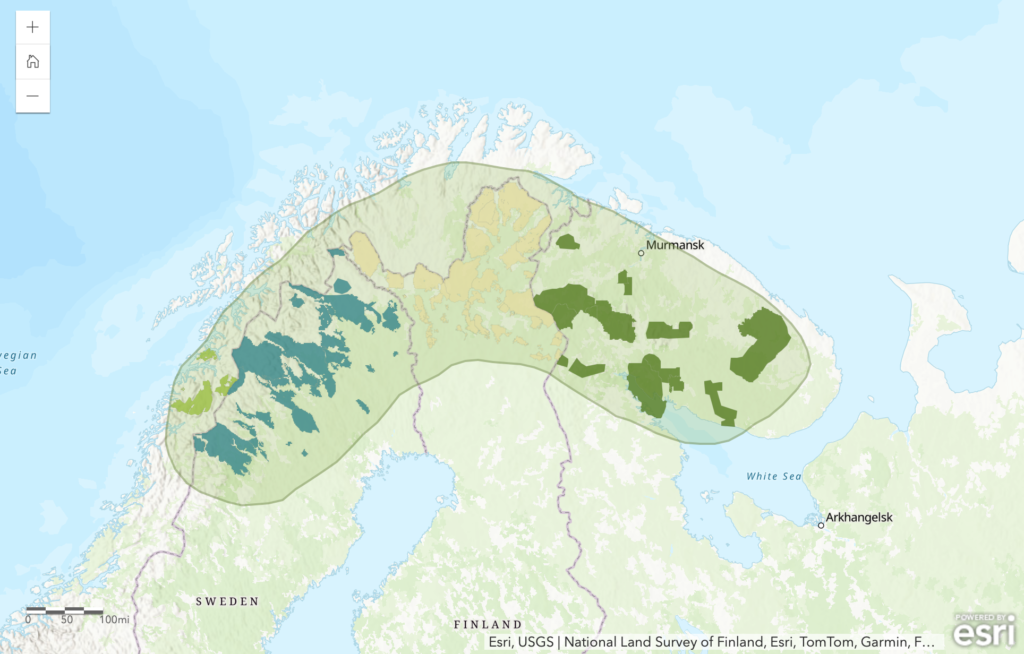Europe World Park
The Scandinavian montane birch forests and Russian taiga are home to some of the largest expanses of natural landscape and wilderness in Europe. As changing climatic conditions and increasing human populations and industrial activities creep further into this ecosystem, it becomes even more important to conserve it.
The area stretching from the Norwegian Sea to the Russian taiga north of the White Sea is an ideal candidate for a World Park due to its limited infrastructure, high ecological and biological diversity and global potential for mitigating climate change.
Scroll down to explore how World Parks, Inc. is working to create the Europe World Park.
Areas such as Lapland are well-known and studied for their local cultures and strong potential to assist in the fight against climate change. There exist many protected areas however, connecting these existing protected areas (as seen highlighted here) would create a massive wildlife corridor and intact ecosystem.
By building off of existing conserved and protected areas, we are expediting the process of large-scale landscape conservation by filling in the missing areas of interest.
Based on an assessment using data from the UN Environment Program and the Integrated Biodiversity Assessment Tool, this proposed World Park would include nearly 700 species on the IUCN Red List, almost 900 existing protected areas and more than 50 Key Biodiversity Areas.
Scroll down to explore how World Parks, Inc. is defining the Europe World Park.
Ecologically speaking, it is more beneficial to have larger, connected areas of protection than to have smaller, disjointed areas.
The Europe World Park will be a bold and innovative solution to environmental protection and international cooperation.
The Europe World Park will cross international borders and cover over 50,000 square miles of primary forest, river systems and mountain regions.
We see this as necessary to ensure the world meets the conservation goals set out by the global scientific community.


